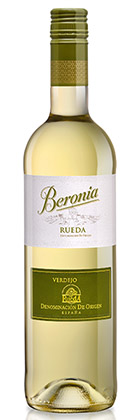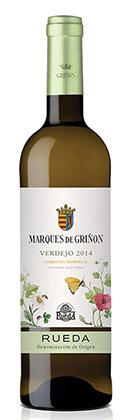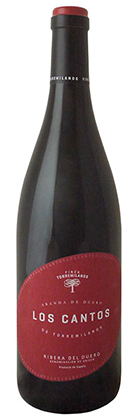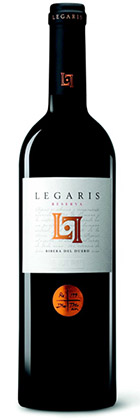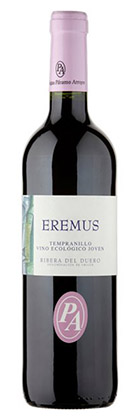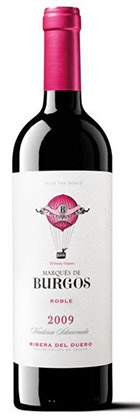Rueda and the Duero
For many years, before the late 1970s, Spain’s most prestigious and expensive red wine appeared a complete maverick. Few had tasted Vega Sicilia, and fewer still knew where, in the vast dustbowl of central Spain, such a remarkable vineyard could be found.
 The plain of Old Castile, stretching in tawny leagues north from Segovia and Avila to the old kingdom of Leon, is traversed by the adolescent Duero, the river that in Portugal becomes the Douro and the home of port. It is the shallow valleys of the Duero and its tributaries, around Valladolid, from Zamora upstream to Aranda de Duero, that have an ancient winemaking tradition - more, one would think, because they had a thirsty population (Valladolid, as the capital of 17th century Spain, formulated strict wine laws) than because the fierce climate favoured the vine. The wines were very alcoholic: the reds black; the whites like primitive sherry. On the credit side there were chalky clay soils that retained the sparse rainfall and gave the wine at least a suggestion of the quality associated with chalk. And at 2,000 feet (610 metres) the nights are remarkably cool.
The plain of Old Castile, stretching in tawny leagues north from Segovia and Avila to the old kingdom of Leon, is traversed by the adolescent Duero, the river that in Portugal becomes the Douro and the home of port. It is the shallow valleys of the Duero and its tributaries, around Valladolid, from Zamora upstream to Aranda de Duero, that have an ancient winemaking tradition - more, one would think, because they had a thirsty population (Valladolid, as the capital of 17th century Spain, formulated strict wine laws) than because the fierce climate favoured the vine. The wines were very alcoholic: the reds black; the whites like primitive sherry. On the credit side there were chalky clay soils that retained the sparse rainfall and gave the wine at least a suggestion of the quality associated with chalk. And at 2,000 feet (610 metres) the nights are remarkably cool.
Vega Sicilia, the one perfectionist property at Valbuena de Duero, proved that very fine red could be made. The estate was planted in imitation of Bordeaux in the 1860s, at the same time as the first such steps were being taken in Rioja. But here the Bordeaux grapes were used, with only a minority of the native Garnacha and Tempranillo (known here as Tinto Fino or Tinto del Pais). Vega Sicilia’s Unico, aged ten years in barrel, is a wine of astonishing, penetrating personality. For many people its younger brother, the five-year-old Valbuena from the same estate, is an easier wine to understand.
Rather than imitate the local hero by planting Cabernet, the region has now won its spurs with the Tinto Fino almost single-handed. About 1970 the cooperative at Peñafiel, just to the east, its cellars under the Moorish castle, greatly refined its winemaking, using the Tinto Fino and ageing its Reservas, notably the extremely tasty Protos, in oak. Next to follow was Alejandro Fernández at Pesquera de Duero. Since the early I980s Fernández has had a near-fanatical following for his 100% Tinto Fino, which here makes perhaps its grandest wine. Concentrated fruit and high alcohol sound merely aggressive, but Pesquera has a luscious quality which promises many years of staying power.
 In 1982 the region was defined as a Denominación de Origen under the name Ribera del Duero, along with the neighbouring Ribera de Burgos around Aranda in the province of Burgos (whose wines, Torremilanos for example, tend to be paler and lighter than the hefty reds of Valladolid).
In 1982 the region was defined as a Denominación de Origen under the name Ribera del Duero, along with the neighbouring Ribera de Burgos around Aranda in the province of Burgos (whose wines, Torremilanos for example, tend to be paler and lighter than the hefty reds of Valladolid).
Meanwhile south of Valladolid something more like a revolution was taking place. The old wine centres of Rueda and Nava del Rey, traditional producers of sherry-like whites, came under the prospecting eye of the famous Rioja bodega, Marques de Riscal, looking for a new source for white wines of fashionable fruity freshness. It was not the landscape, flat and bare, but the local white grape, the Verdejo - also the ancient network of deep cellars which once supplied the court at Valladolid - that attracted Riscal’s attention.
Carefully vinified, the Verdejo has good fruity acidity and the ability to age well in cask. In 1971, with the advice of Professor Emile Peynaud from Bordeaux, Riscal built a modern ‘inox’ bodega. In 1980 Rueda was made a denominación. At the same time the local Sanz farmly’s Bodegas de Crianza de Castilla la Vieja went into partnership with the Marques de Griñon, who had already attracted attention by growing Cabernet at, of all places, Toledo. Griñon, like Riscal (and also with Peynaud advice) makes a Rueda Superior (which must be at least 60% Verdejo), but sells it unaged. It is remarkably crisp and aromatic, certainly one of Spain’s best white wines.

